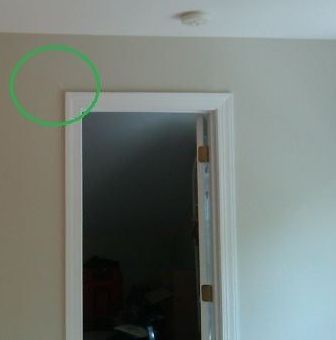
Drywall Cracks and Settling
Drywall cracks are common in new homes, especially in the first few years. Homes are built with wood, which expands and contracts. In vacation homes, fluctuating humidity levels and temperatures effect the likelihood that cracking will occur. Cracking can be very minor and only in one or just a few locations, or it may be more significant, where you'll see various degrees of cracking in several locations. Fear not. New drywall cracking is not a sign of a serious problem.
When the home is occupied, the temperature goes up, and when the home is not occupied, owners (wisely) lower the temperatures. This also increases and decreases the humidity level. These changes over time can cause cracking in drywall.
While drywall cracks and repairs are not covered under any kind of warranty, here is some information that you can use to help mitigate the problem and prevent future problems.
Wait
Wait at least 12 months from the time the cracks appear, otherwise it will cost you more and more with each return visit by whoever does the repairs. It’s worth noting that many homeowners repair cracking themselves, which is a very simple process. You can watch a three-minute YouTube video on how to make simple repairs.
Understanding Cracking and Settling:
Wood shrinkage may shorten the overall height of a home by 1/4 to 3/4 of an inch, depending on the type of framing, the type of materials and the moisture level. Wood tends to shrink when it dries and expands during periods of higher humidity. Expansion and contraction results in slight changes in wood, such as shrinking, warping, bowing, twisting and cupping. It’s all quite natural, and it’s these natural changes can cause drywall cracks to appear, drywall nail heads to pop-out, and doors to “stick.”
There are certain framing members or components in a new home where the wood shrinkage is more likely to cause cracking; these include:
- Headers over doors and windows,
- Wall openings between rooms
- Where the lowest part of the ceiling meets the walls
- Headers over garage doors.
- Ceiling joists connected to engineered or manufactured wood type headers.
- Manufactured trusses which span from one exterior wall to another. “Truss uplift” is very common and is the cause cracking. Trusses are often used in inexpensive, ranch-style homes, something we don’t do.
Depending upon the style of home, most builders will use manufactured or engineered lumber for headers, especially for longer spans and some roof rafters, because they are often stronger and have less shrinkage.
Pay extra attention to the humidity level of their new home for a year or two, because wide swings in the humidity level and temperatures will contribute to the likelihood of drywall cracks occurring.
Monitoring the garage and crawl space is also critical. One of the best things that a homeowner can do to prevent or reduce drywall cracking in their home is to monitor and control the humidity level of the home. Using an inexpensive digital hygrometer indoor thermometer humidity gauge or something similar is helpful.
Houses can weigh upwards of 300 pounds per square foot, so “settling” is also common in new homes over the first few years. Even minor settling cause cracking in drywall, foundations, parging and slabs. This has more to do with site conditions (soil types), compaction, and moisture levels in the soil, more so than anything structural. It's also different from typical expansion and contraction of the framing that occurs inside the home.
Keep in mind, your house was inspected by building code officials and approved by structural engineer, so you can be assured your house was built properly. There are things, as a homeowner, you can do to maintain it properly and mitigate both short-term and long-term problems.
1) Monitor the moisture level in all levels of your home, including the crawl space and garage.
2) Avoid big fluctuations in humidity, moisture and temperatures throughout the house.
3) Watch for site conditions that can affect moisture levels in and under the home.
4) Redirect water away from the house.
5) Correct problems quickly and make repairs when you are confident all cracking has subsided.


